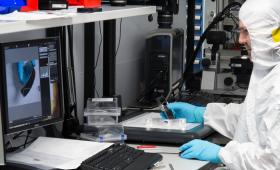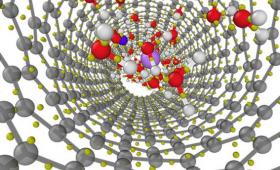Two Livermore scientists, Federica Coppari and Erin Nuccio, are recipients of the Department of Energy’s Office of Science Early Career Research Program award.
Science and Technology
in the News
Science and Technology
in the News
News Center

Biologists from Livermore have found another mechanism that affects the maintenance and expansion of malignant breast cancer cells: electric signals in the tumor microenvironment.

Livermore scientists report that surrogate models supported by neural networks can perform as well, and in some ways better, than computationally expensive simulators.

A team of researchers including scientists from Livermore details the first quantitative measurements of the magnetic field structure of plasma filamentation.

LLNL researchers have developed a way to computationally model the activity and structures of neuronal communities as they grow and mature on the device over time.

Following weeks of prototyping, Livermore is partnering with private industry to mass-produce a simple mechanical ventilator developed for COVID-19 patients that has been authorized for emergency use by the U.S. Food and Drug Administration.

Livermore researchers are working with other Department of Energy national labs on technologies to improve the speed and accuracy of tests for COVID-19.

Lawrence Livermore scientists have discovered a new method to add an antireflective metasurface (ARMS) layer on laser optics glass that’s so durable, it can survive getting “smooshed.”

A paper describing the design and performance of a workhorse NIF experimental platform known as TARDIS (target diffraction in situ) was a featured article in a recent edition of the journal Review of Scientific Instruments.

A multi-institutional research team explored how the structure and electronic properties of liquid water can be affected by the presence of ions and nanoconfinement

